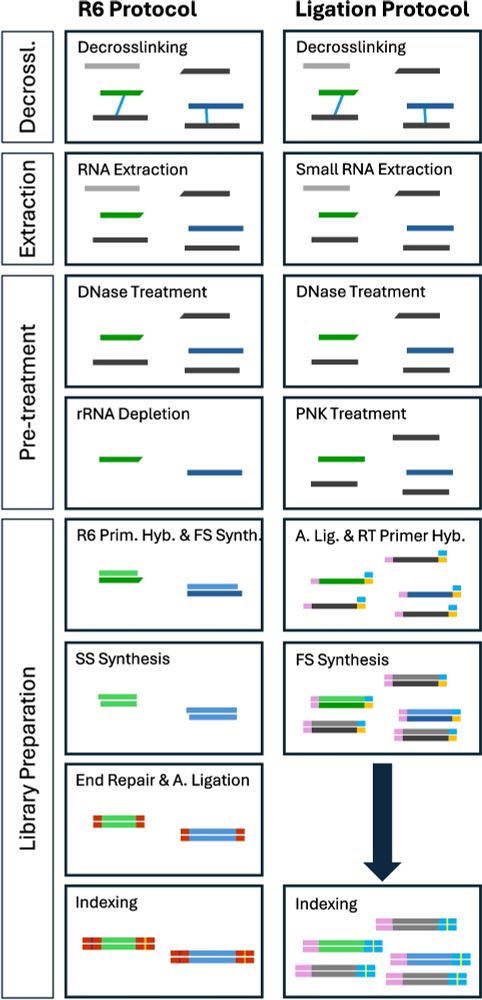If you could take just one journalist with you to a polar archipelago, who would it be? 100% @kakape.bsky.social😉 Thanks for the extensive conversations and excellent reporting. Immer wieder gerne!
16.10.2025 22:00 — 👍 4 🔁 1 💬 0 📌 0

Three researchers preparing samples for high-throughput sequencing in the laboratories of the Genomic Surveillance Platform of the Institut Pasteur de Bangui.
New study by the Institut Pasteur de Bangui and HIOH examines CAR #mpox outbreaks via genomic #epidemiology. High frequencies of independent spillovers highlight the need to strengthen systematic surveillance & identify animal sources to prevent future outbreaks www.sciencedirect.com/science/arti...
05.09.2025 09:49 — 👍 4 🔁 3 💬 0 📌 0
Thanks to Verena for involving us and to all those involved, including the curators of the collections in Zurich (who provided the new samples) and the Berlin Museum of Medical History of the Charite (who provided positive controls).
02.07.2025 10:20 — 👍 0 🔁 0 💬 0 📌 0
More data is definitely needed to understand the evolutionary genomics of the largest respiratory pandemic of the 20th century.
We don t expect a ton of specimens out there, but a few more can certainly be found.
02.07.2025 10:20 — 👍 1 🔁 0 💬 1 📌 0
@lemeylab.bsky.social (incl Bram Vrancken) kicked in to show that the small sample of 1918 IAVs seem to show higher diversity in HA, PA, and PB2 than matched 2009 H1N1pdm samples.
Perhaps helped transition to high pathogenicity, as HA and pol genes have been linked to 1918 IAV high pathogenicity?
02.07.2025 10:20 — 👍 0 🔁 0 💬 1 📌 0
The case was from the pre pandemic wave that hit Zurich in July 1918, and was sampled within a week of the first patient clearly identified as a flu case in the city.
The genome already shows human-like residues at key sites for adaptation to mammalian hosts.
02.07.2025 10:20 — 👍 1 🔁 0 💬 1 📌 0
Congrats to the two amazing PhD candidates who led this work @schlotterbeckj.bsky.social and Carme Riutord-Fe: terrific job! And many thanks to Fabian Leendertz, Liv Patrono, Ari Düx, @jangogarten.bsky.social and everyone involved for yet another exciting project together! 4/4
09.04.2025 06:24 — 👍 2 🔁 0 💬 0 📌 0
At first glance it may seem exaggerated to put so much emphasis on a single or a few ecosystems, but in the long run I think it is probably our best shot at disentangling the complex ecological processes that lead to the emergence of infectious diseases 3/4
09.04.2025 06:24 — 👍 3 🔁 1 💬 1 📌 0
This was only possible because of @helmholtz-hioh.bsky.social commitment to long term health monitoring of wild nonhuman primates, here at Taï (CIV) with our friends of the @taichimpproject.bsky.social 2/4
09.04.2025 06:24 — 👍 2 🔁 0 💬 1 📌 0
We just succeeded in formally linking a specific rodent species - the otherwise charming fire-footed rope squirrel - to the onset of a mpox outbreak in a primate species - sooty mangabeys. Here Kai’s report on the preprint we released yesterday 1/2
09.04.2025 06:24 — 👍 15 🔁 7 💬 1 📌 2
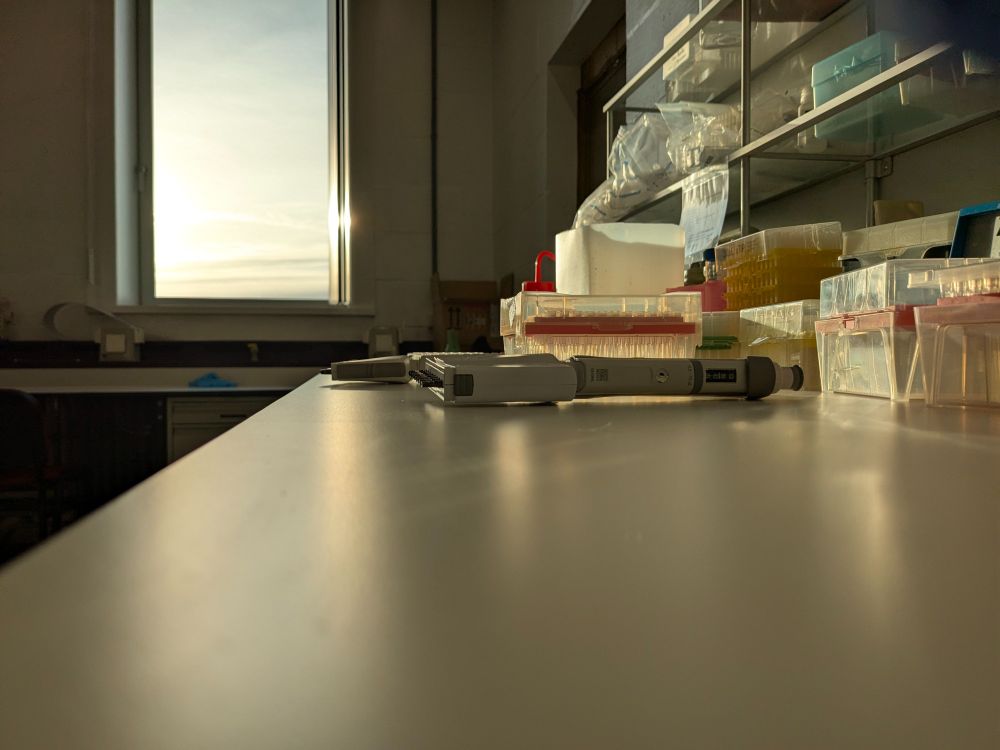
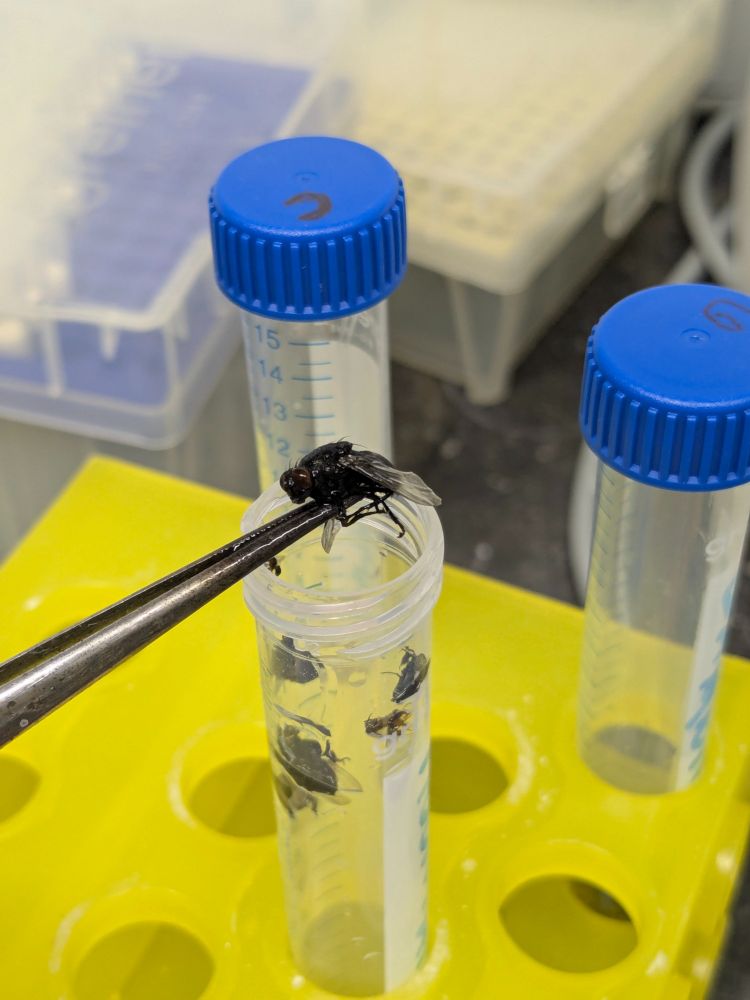
🧬 First update from the eDNA lab! 🪰
Extracting mammalian DNA from carrion flies collected in Tanzania for biodiversity studies.
A first trial using @helmholtz-hioh.bsky.social protocol for the flies collected by @uantwerpen.bsky.social + #Gecolab
Shoutout to @paulinevanl.bsky.social ! 📸
#eDNA
23.01.2025 11:22 — 👍 4 🔁 4 💬 0 📌 0
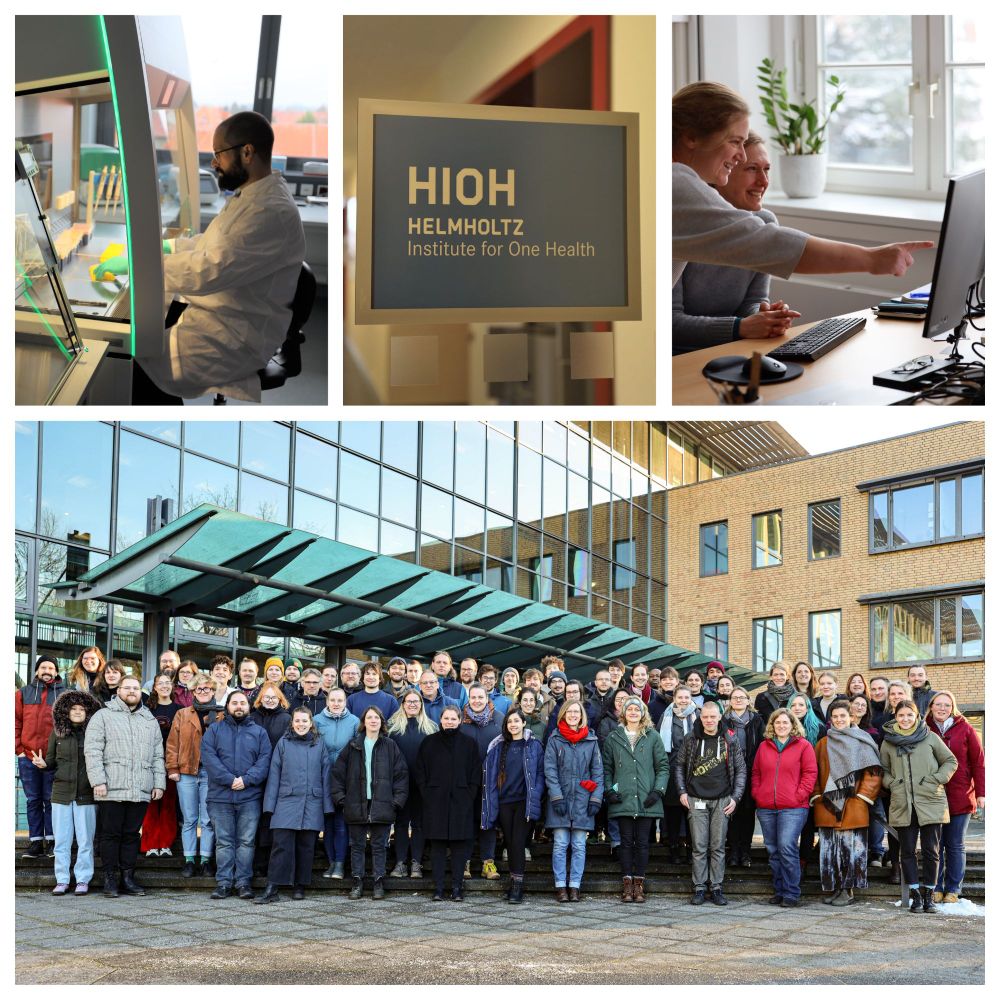
🚨 #Job Alert 🚨
Die Bewerbungsfrist für die Position als Institutssekretär:in am HIOH endet bald! 📅 Bewerbungsschluss: 22. Januar.
Eine spannende Chance, Teil eines internationalen Forschungsteams in Greifswald zu werden. Mehr Infos: www.helmholtz-hioh.de/fileadmin/HI...
#JobOpportunity #OneHealth
10.01.2025 10:48 — 👍 0 🔁 3 💬 0 📌 0
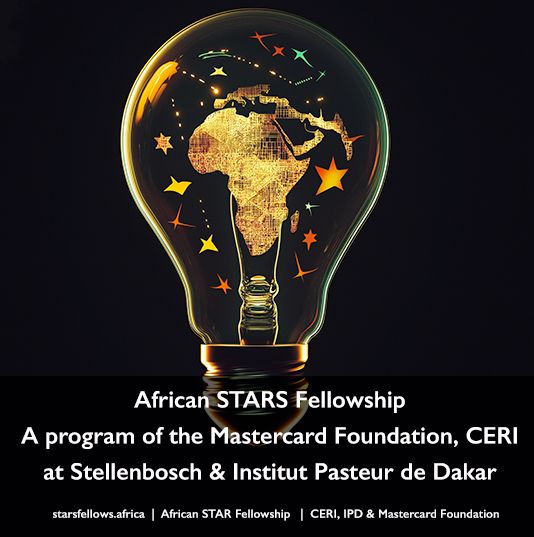
Excited to announce the African STARS Fellowship, one of the largest programs in Africa. In partnership with Mastercard Foundation, Institut Pasteur & Stellenbosch University, initial funding of 165 million rands. Press release ceri.org.za/news/?token=... Launch 15 Jan, Cape Town, SA
12.01.2025 08:26 — 👍 8 🔁 10 💬 0 📌 1
I also think that it does a pretty good job at publicizing important discussions and changes through multiple means (website, Arch Vir, JGV and articles in prominent journals, e.g. Nat Microbiol).
11.01.2025 12:44 — 👍 0 🔁 0 💬 0 📌 0
As others, including @psimmond.bsky.social have pointed at, the ICTV welcomes all views and proposals.
11.01.2025 12:44 — 👍 0 🔁 0 💬 1 📌 0
A very reasonable thread on this (a bit unnecessarily overheated) debate.
11.01.2025 12:44 — 👍 2 🔁 0 💬 1 📌 0
I d also like to be added. Thanks!
10.01.2025 17:35 — 👍 0 🔁 0 💬 1 📌 0
Hi
Related to your & the previous post, I looked it up and there are 120 Study Groups (SGs), with collectively more than 900 members. These are expert and typically quite experienced virologists, & should provide a reasonable cross-section of knowledge and expertise. So it's not a mad dictatorship!
10.01.2025 15:39 — 👍 3 🔁 1 💬 0 📌 0
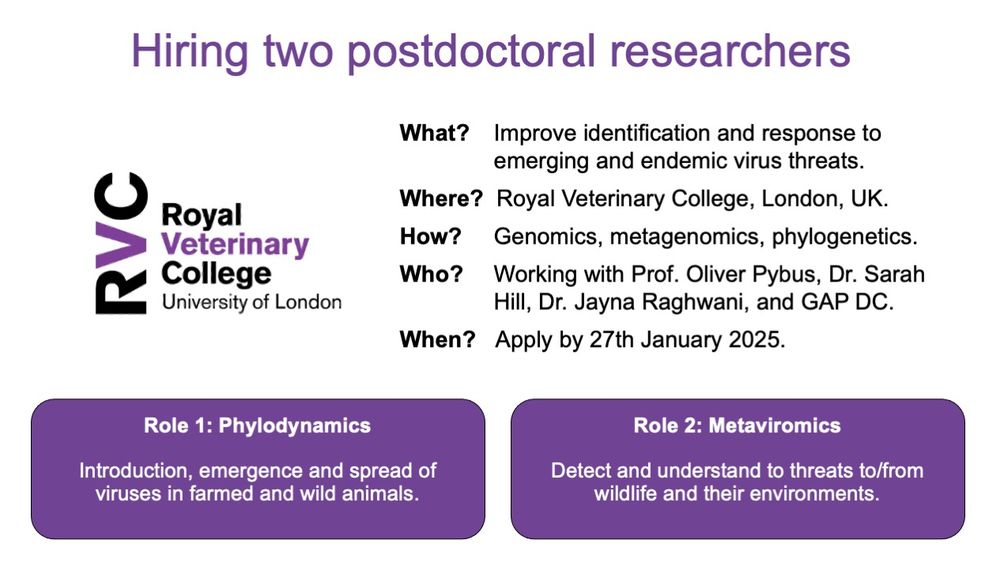
An image with text describing the jobs, and the logo of the Royal Veterinary College. The text says:
Title: Hiring two postdoctoral researchers.
What? Improve identification and response to emerging and endemic virus threats.
Where? Royal Veterinary College.
How? Genomics, metagenomics, phylogenetics.
Who: Working with Prof Oliver Pybus, Dr Sarah Hill, Dr Jayna Rahgwani, and GAP DC.
When? Apply by 27th January 2025.
Underneath this, there are two boxes describing the two roles:
Role 1: Phylodynamics: Introduction, emergence and spread of viruses in farmed and wild animals.
Role 2: Detect and understand threats to/from wildlife and their environments.
🦠 We are recruiting two 2-year postdocs to work at the intersection of virus genomics and infectious disease. jobs.rvc.ac.uk/vacancy.aspx... Please share widely!
18.12.2024 18:03 — 👍 22 🔁 18 💬 1 📌 4
This happens every year, which means the ICTV is de facto a permanent consultation body; however, it does not wait for the broader community engagement to enact taxonomy changes
17.12.2024 11:38 — 👍 0 🔁 0 💬 0 📌 0
These proposals are reviewed by the SG, then
subcommittees and finally the executive committee - a process starting in spring each year (SG send proposals to subcommittees at this point). Approved proposals are then ratified by the entire ICTV membership in the fall
17.12.2024 11:38 — 👍 0 🔁 0 💬 1 📌 0
All binomials have already been approved by the ICTV and therefore represent the current official taxonomy. The way it works: ICTV operates year-round, with taxonomy change proposals collected by (usually) family level study groups (SG) and subcommittees - each overseeing multiple SG
17.12.2024 11:38 — 👍 0 🔁 0 💬 1 📌 0
The new binomials can be found in the ICTV website‘s taxonomy browser, where a tabular master species list is also available
ictv.global/taxonomy
ictv.global/msl
17.12.2024 11:38 — 👍 0 🔁 0 💬 1 📌 0
Much like peer reviewing, it is the kind of community service that many of us add to their evenings and weekends workload. I believe it is now up to the community to engage more with the ICTV. The tools exist (proposals of taxonomic change can be filed by anyone).
16.12.2024 13:35 — 👍 1 🔁 1 💬 3 📌 0
I agree that there is significant room for improvement in viral taxonomies. That said, we cannot expect it will all happen via the work of virologists that accept to serve in ICTV study groups.
16.12.2024 13:35 — 👍 0 🔁 0 💬 1 📌 0
NCBI uses a single viral taxonomy at any given time. So it is only a problem when results from analyses conducted before and after taxonomic changed are combined. People should always keep this in mind, because there are taxonomic changes every year.
16.12.2024 07:40 — 👍 0 🔁 0 💬 1 📌 0
UKRI Future Leaders Fellow and Group Leader in Microbial Genomics at UCL Genetics Institute @ugiatucl.bsky.social.
Reconstructing the evolution of us and our pathogens past, present and future using large-scale genomics.
https://www.ucl.ac.uk/~ucbpvan
Posts about jobs, conferences, etc. from the Evolution Directory (EvolDir) mailing list https://evol.mcmaster.ca/evoldir.html, run by Brian Golding. This bot is run by @rdmpage.bsky.social. Problems: https://github.com/rdmpage/evoldir-bluesky/issues
Adjunct Professor @ University of Zurich; Head of Research Group; Historian & Epidemiologist
Virologist | Professor of Sneezy Diseases | studies influenza @ MRC-University of Glasgow Centre for Virus Research | occasionally draws things | (he/him)
https://www.gla.ac.uk/schools/infectionimmunity/staff/edwardhutchinson/
Science journalist at @ksjatmit.bsky.social + @science.org | @theopennotebook.bsky.social Español Editorial Director | Views my own | he/him
Postdoc researching ancient pathogen genomics 🦠⏳💀| Interested in ancient genomes and disease genetics | she/her 🏳️🌈
PhD candidate in the Blanco-Melo lab
UW | Fred Hutchinson | Seattle, WA
Historical viruses!!!
Assistant Professor at Globe Institute, University of Copenhagen. Interested in parasites, environmental DNA, and terrestrial mammal and insect diversity.
Working on advancing trust in eDNA at OceanOmics. He/Him.
'It is required that one man should goof gloriously for the people.'
Bringing together global expertise, knowledge, research and teaching to help humanity adapt faster to outbreaks of disease.
Human Genetics, Evolution, Immunology, HLA
Timeo Hominem Unius Libri
Research biologist and lover of nature, mostly bacteria, insects and (lately) birds
Associate Professor - Department of Microbiology, Immunology and Transplantation - Rega Institute, KU Leuven, Belgium
Canadian scientist, wildlife ecology and evolution, connectivity, One Health, https://wildepi.ca.
Web page: https://bowmanecology.wordpress.com
Southmayd Prof @YaleLawSch + Philosophy @Yale. Ed, @LegalTheory + Stanford Encyclopedia of Phil. “Legality”, “The Internationalists” (with @oonahathaway), “Fancy Bear Goes Phishing.” Overuses “neurosymbolic”
Professor Infectious Disease Epidemiology@Hannover Medical School and Head Department of Epidemiology@Helmholtz Centre for Infection Research, https://helmholtz-hzi.de/epidemiologie; President of the German Society for Epidemiology, https://www.dgepi.de/


